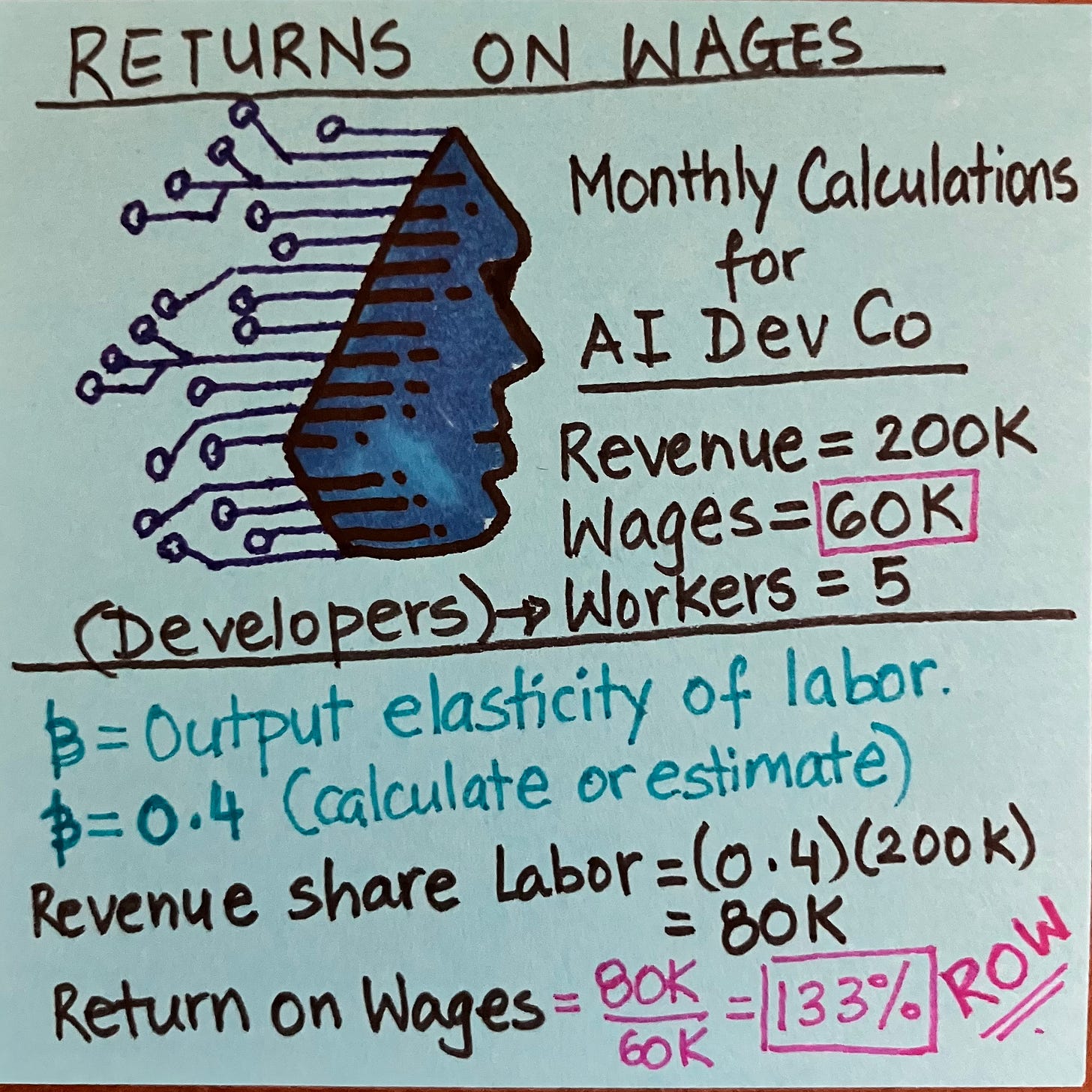Today we will explore how to calculate the returns on wages paid to labor using the concept of output elasticity of labor (β). This concept is directly derived from the Cobb-Douglas Economic Production Model (I will not bore you with all the details). The biggest assumption to remember is that everything else (land, Capital, Entrepreneurship, and Technology) remains constant when we are calculating these values.
Watch the short video to get a better visual context for this post:
The workshop on Oct. 17th will include a section on calculating costs correctly for your business.
What is Output Elasticity of Labor (β)?
Output elasticity of labor (β) is defined as the percentage change in output resulting from a one percent change in labor input, holding all other factors constant. In simpler terms, it tells us how sensitive the output is to changes in the amount of labor used.
It is critical to estimate this value correctly based on historical data of either the company itself or by utilizing industry analysis and trends.
Example:
A small AI development company, AI Dev Co. presents the following monthly data:
Total Revenues: $200,000
Total Wages: $60,000
Output Elasticity of Labor (β): 0.4
Calculations:
Using the β, the revenue share that is directly attributable to labor
Revenue Share of Labor: 0.4 * $200,000 = $80,000
Return on Wages: $80,000 / $60,000 = 133%
What Does This Mean?
The ROW value of 133% means that for every dollar spent on wages, the company generates $1.33 in revenue attributable to labor.
This highlights the significant contribution of labor to the company’s overall revenue.
Actionable Insights with the Right Data
Accurately calculating returns on wages and understanding the contribution of labor to your business’s revenue can be complex. Your data team or data expert can help you to generate Actionable Insights to:
Analyze and interpret data on Labor, Revenue, and Profits
Optimize resource allocation for hiring and compensation.
Identify growth opportunities via upskilling Labor.
Enhance decision-making by estimating appropriate metrics.
Investing in a good data team/expert can provide your small business with the expertise needed to make smarter, data-led decisions that lead to sustainable growth.
P.S.: How do you currently measure the returns on wages in your projects? Let’s discuss!
I help companies to leverage data-led insights to optimize their strategies and achieve better financial outcomes.
#PostItStatistics #DataScience
Follow Dr. Kruti Lehenbauer or Analytics TX, LLC on LinkedIn. DM me for more information.


